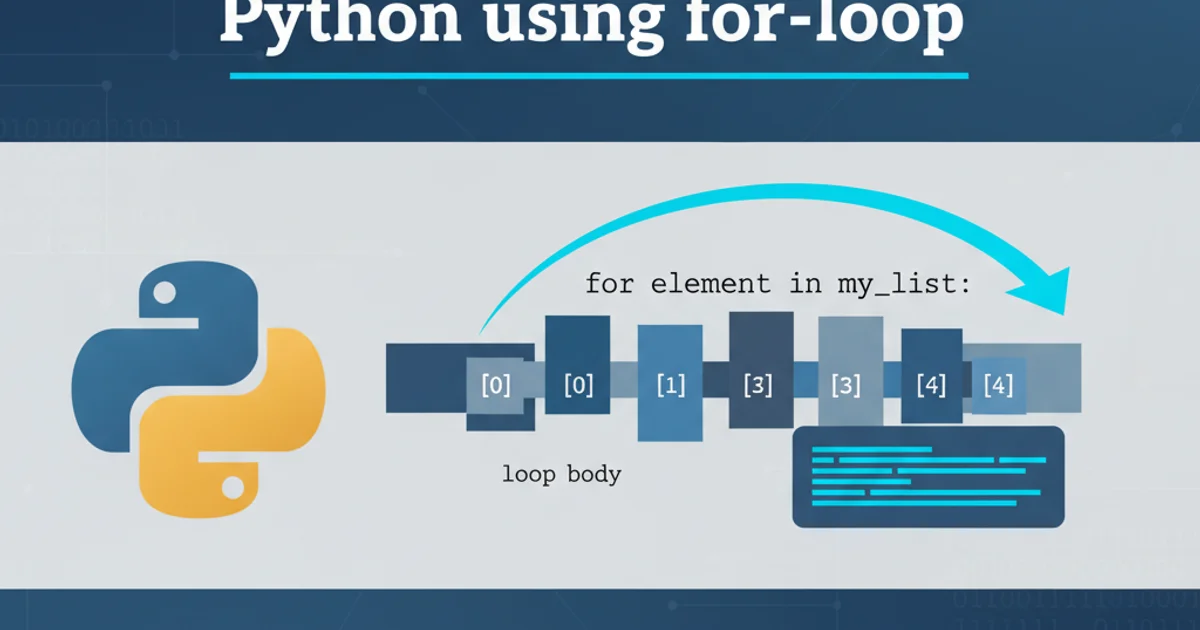Iterating over a list in python using for-loop
Categories:
Mastering List Iteration in Python with For-Loops

Learn the fundamentals of iterating over lists in Python using for-loops, including basic syntax, common patterns, and advanced techniques.
Iterating over collections is a fundamental operation in programming, and Python's for loop provides a powerful and elegant way to process items within a list. This article will guide you through the various methods of using for loops to iterate over lists, from simple element access to more complex scenarios involving indices and modifications.
The Basic For-Loop: Iterating Over Elements
The most straightforward way to iterate over a list in Python is to directly access each element. The for loop assigns each item in the list, one by one, to a temporary variable, allowing you to perform operations on it.
my_list = ["apple", "banana", "cherry"]
for item in my_list:
print(f"Current item: {item}")
Basic iteration over list elements
In this example, the loop will execute three times, with item taking on the values "apple", "banana", and "cherry" sequentially. This method is clean, readable, and generally preferred when you only need to work with the values themselves.
flowchart TD
A[Start]
B{List has more items?}
C[Get next item]
D[Process item]
E[End]
A --> B
B -- Yes --> C
C --> D
D --> B
B -- No --> EFlowchart of a basic for-loop iteration
Iterating with Indices using range() and len()
Sometimes, you might need to know the index of the current item while iterating. This is common when you need to modify the list in place, access elements at specific positions, or work with related data structures. Python provides a way to do this using the range() function in conjunction with len().
my_numbers = [10, 20, 30, 40]
for i in range(len(my_numbers)):
print(f"Index: {i}, Value: {my_numbers[i]}")
my_numbers[i] *= 2 # Modify the list in place
print(f"Modified list: {my_numbers}")
Iterating with indices to access and modify list elements
range(len(list)) allows in-place modification, be cautious when modifying a list you are actively iterating over, as it can lead to unexpected behavior if not handled carefully. For simple element access with index, enumerate() is often a more Pythonic choice.The Pythonic Way: enumerate() for Index and Value
For scenarios where you need both the index and the value of each item, Python's built-in enumerate() function is the most elegant and Pythonic solution. It returns pairs of (index, value) for each item in the iterable.
my_colors = ["red", "green", "blue"]
for index, color in enumerate(my_colors):
print(f"Color at index {index}: {color}")
# You can also specify a starting index
for index, color in enumerate(my_colors, start=1):
print(f"Item number {index}: {color}")
Using enumerate() to get both index and value
enumerate() is highly recommended for its readability and efficiency when you require both the position and the content of list items. It avoids the need for manual index management and makes your code cleaner.
enumerate() function is not limited to lists; it works with any iterable object in Python, such as tuples, strings, and dictionaries.